Identification, cloning and characterization of sis7 and sis10 sugar-insensitive mutants of Arabidopsis
- PMID: 18854047
- PMCID: PMC2579432
- DOI: 10.1186/1471-2229-8-104
Identification, cloning and characterization of sis7 and sis10 sugar-insensitive mutants of Arabidopsis
Abstract
Background: The levels of soluble sugars, such as glucose and sucrose, help regulate many plant metabolic, physiological and developmental processes. Genetic screens are helping identify some of the loci involved in plant sugar response and reveal extensive cross-talk between sugar and phytohormone response pathways.
Results: A forward genetic screen was performed to identify mutants with increased resistance to the inhibitory effects of high levels of exogenous sugars on early Arabidopsis seedling development. The positional cloning and characterization of two of these sugar insensitive (sis) mutants, both of which are also involved in abscisic acid (ABA) biosynthesis or response, are reported. Plants carrying mutations in SIS7/NCED3/STO1 or SIS10/ABI3 are resistant to the inhibitory effects of high levels of exogenous Glc and Suc. Quantitative RT-PCR analyses indicate transcriptional upregulation of ABA biosynthesis genes by high concentrations of Glc in wild-type germinating seeds. Gene expression profiling revealed that a significant number of genes that are expressed at lower levels in germinating sis7-1/nced3-4/sto1-4 seeds than in wild-type seeds are implicated in auxin biosynthesis or transport, suggesting cross-talk between ABA and auxin response pathways. The degree of sugar insensitivity of different sis10/abi3 mutant seedlings shows a strong positive correlation with their level of ABA insensitivity during seed germination.
Conclusion: Mutations in the SIS7/NCED3/STO1 gene, which is primarily required for ABA biosynthesis under drought conditions, confer a sugar-insensitive phenotype, indicating that a constitutive role in ABA biosynthesis is not necessary to confer sugar insensitivity. Findings presented here clearly demonstrate that mutations in ABI3 can confer a sugar-insensitive phenotype and help explain previous, mixed reports on this topic by showing that ABA and sugar insensitivity exhibit a strong positive correlation in different abi3 mutants. Expression profiling revealed a potentially novel regulation of auxin metabolism and transport in an ABA deficient mutant, sis7-1/nced3-4/sto1-4.
Figures
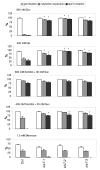
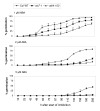
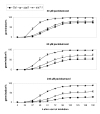



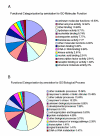

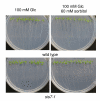



Similar articles
-
Interaction between sugar and abscisic acid signalling during early seedling development in Arabidopsis.Plant Mol Biol. 2008 May;67(1-2):151-67. doi: 10.1007/s11103-008-9308-6. Epub 2008 Feb 17. Plant Mol Biol. 2008. PMID: 18278579 Free PMC article.
-
The regulator of G-protein signaling proteins involved in sugar and abscisic acid signaling in Arabidopsis seed germination.Plant Physiol. 2006 Jan;140(1):302-10. doi: 10.1104/pp.105.069872. Epub 2005 Dec 16. Plant Physiol. 2006. PMID: 16361523 Free PMC article.
-
The Arabidopsis DELAY OF GERMINATION 1 gene affects ABSCISIC ACID INSENSITIVE 5 (ABI5) expression and genetically interacts with ABI3 during Arabidopsis seed development.Plant J. 2016 Feb;85(4):451-65. doi: 10.1111/tpj.13118. Epub 2016 Feb 5. Plant J. 2016. PMID: 26729600
-
ABA and sugar interactions regulating development: cross-talk or voices in a crowd?Curr Opin Plant Biol. 2002 Feb;5(1):26-32. doi: 10.1016/s1369-5266(01)00225-4. Curr Opin Plant Biol. 2002. PMID: 11788304 Review.
-
Contribution of ABA UDP-glucosyltransferases in coordination of ABA biosynthesis and catabolism for ABA homeostasis.Plant Signal Behav. 2014;9(7):e28888. doi: 10.4161/psb.28888. Plant Signal Behav. 2014. PMID: 25763481 Free PMC article. Review.
Cited by
-
Molecular characterization of a mutation affecting abscisic acid biosynthesis and consequently stomatal responses to humidity in an agriculturally important species.AoB Plants. 2015 Jul 27;7:plv091. doi: 10.1093/aobpla/plv091. AoB Plants. 2015. PMID: 26216469 Free PMC article.
-
Embryonic reactivation of FLOWERING LOCUS C by ABSCISIC ACID-INSENSITIVE 3 establishes the vernalization requirement in each Arabidopsis generation.Plant Cell. 2022 May 24;34(6):2205-2221. doi: 10.1093/plcell/koac077. Plant Cell. 2022. PMID: 35234936 Free PMC article.
-
SUGAR-INSENSITIVE3, a RING E3 ligase, is a new player in plant sugar response.Plant Physiol. 2010 Apr;152(4):1889-900. doi: 10.1104/pp.109.150573. Epub 2010 Feb 10. Plant Physiol. 2010. PMID: 20147494 Free PMC article.
-
An autoregulatory feedback loop involving PAP1 and TAS4 in response to sugars in Arabidopsis.Plant Mol Biol. 2012 Sep;80(1):117-29. doi: 10.1007/s11103-011-9778-9. Epub 2011 May 1. Plant Mol Biol. 2012. PMID: 21533841 Free PMC article.
-
The ABI4-induced Arabidopsis ANAC060 transcription factor attenuates ABA signaling and renders seedlings sugar insensitive when present in the nucleus.PLoS Genet. 2014 Mar 13;10(3):e1004213. doi: 10.1371/journal.pgen.1004213. eCollection 2014 Mar. PLoS Genet. 2014. PMID: 24625790 Free PMC article.
References
Publication types
MeSH terms
Substances
LinkOut - more resources
Full Text Sources
Molecular Biology Databases

